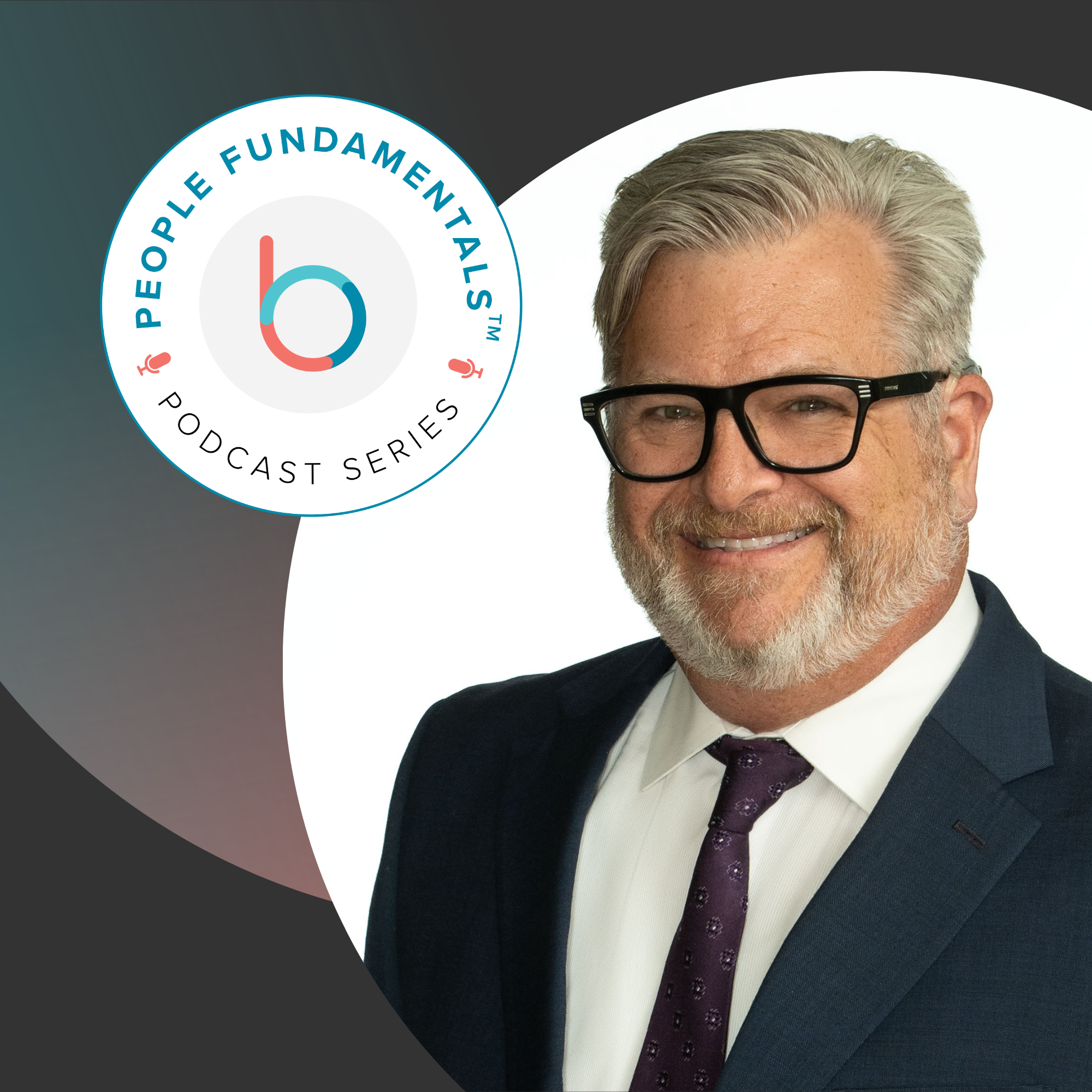How we work is constantly evolving: As we incorporate new technology into our daily processes, our job roles are changing in response. We need to develop talent who can flex as circumstances change and adopt new roles as the business evolves. A comprehensive talent development program can get you there.
A talent development program keeps your workforce up to date on skills, abilities, and knowledge. Beyond that, talent development empowers employees to learn and grow continually — an inherently powerful asset for your business.
When change is constant, your talent’s growth and development must also be continuous. Learn how to keep your workforce relevant and ready for the future by implementing a talent development program at your organization.
What Is Talent Development?
Talent development is the spectrum of processes, tools, and opportunities that enable individual employees to grow and evolve. Talent development elevates the skills and abilities already present in your workforce and aligns them with your overall business and talent strategies.
When employee development goals are created within a comprehensive program, you can better link them to organizational goals. This type of program presents a classic “win-win” scenario by engaging employees while expanding the entire workforce’s capabilities.
Here are a few ways to embed talent development within your business’s DNA.
Enhance Existing HR Processes and Systems
Many of your existing human resources (HR) processes and systems already support workforce talent development. For example, traditional training and development programs build skills and abilities internally. To connect current programs with ongoing talent development, work with learning and development (L&D) leaders to design programming that points workforce growth in the right direction.
Other HR processes have untapped potential for talent development. Performance management has historically been a transactional process where managers “grade” employee performance. However, this process can be reimagined as engaging and fruitful. Modern performance management can help employees understand their strengths and weaknesses so that they can grow within the company.
When managers help each report discover their professional interests and create a customized employee development plan, you can better understand what your workforce already possesses and what they’re working toward. This data is key to successful workforce planning.
Find the Right Tools to Develop Your Team
Talent development tools include training programs and modules, assessments, performance tracking software, and general talent management software. Using these tools, your HR team can help employees continue learning while directing their growth. The data stored in your HR systems, for example, can help employees discover their strengths and interests and match employees to areas of the company where they can blossom.
Most organizations already have these tools in place at different stages of the employee life cycle, but they can take on broader applications, too. Assessments, for instance, are often used in hiring, but they can also provide essential data to help long-time individual employees chart their growth. Your HR team can use assessment data in the aggregate to evaluate the skills, abilities, and knowledge your workforce possesses.
Treat Job Openings as Learning Opportunities
Your talent marketplace is a powerful element of a comprehensive talent development program. A high level of talent mobility in your job architecture offers practical opportunities for employees to practice new skills in different environments across the organization.
A fluid job architecture that empowers employees to take on new organizational tasks and assignments can turn ordinary work into extraordinary development. Develop an agile, flexible job architecture backed by experiential learning, stretch assignments, and cross-training opportunities. Employees who are encouraged to pursue new roles within your organization are likely to have increased motivation and engagement.
Why Is Talent Development Relevant?
Talent development is essential for creating flexibility and agility within the workforce. So much change is happening outside your organization and outside of your control. However, what you do to engage, retain, and develop top talent can give you direct influence over one of your most critical variables: your talent.
Consider these areas where you can apply talent development strategies.
Employee Engagement and Performance
Talent development doesn’t just benefit the business. It’s good for employees, too. Constant learning and working toward smaller development goals can help keep employees engaged. That engagement can make a critical difference in performance quality because engaged employees are more invested in their work.
Employee Retention
Because the world of work is changing so quickly, talent development can also improve retention. Employees know that skills development is crucial for keeping up with change, and they’re more likely to stay with organizations that provide those crucial development resources.
Succession Planning
Identifying growth opportunities across the workforce helps you identify the next generation of leaders. A talent development program where employees can take on new tasks and responsibilities as part of their learning process can help you pinpoint high-potential employees to train for future leadership roles.
Your talent development program can also home in on growth opportunities for leaders. What we need from leadership is evolving, too, and talent development can help you choose the right people and give them the best chance at success.
4 Benefits of Talent Development
Talent development produces several significant benefits for your business. The right program can help you cut back on costs, hire and develop the right people, and prepare your workforce for what’s next.
Reduce Costs
In-house talent development programs enable you to reskill employees and fill positions you’d pay a premium to fill on the external market. Internal development can significantly reduce the costs of hiring and recruiting. And when employees feel like they have opportunities to learn and grow, they’re more likely to be engaged in their work and remain at the organization.
A comprehensive talent development program also helps you make better talent decisions across the organization. You’ll see where employees can drive the most value and where they’re most interested in contributing their skills. This practice can reduce the risk of putting someone in a position they’re likely to vacate quickly, and avoiding such mistakes reduces the cost of turnover.
Hire In-Demand Talent
A well-designed talent development program allows you to hire talent with the aptitudes and abilities you need, even when they don’t have the experience. A talent development program can help you mold up-and-coming talent to fill your business’s needs — empowering long-term employee growth.
An emphasis on talent development in your employer brand can be a big selling point when recruiting. This approach signals that your business cares about the workforce and actively invests in employee growth.
Develop a High-Performance Workforce
Integrating talent development across the employee life cycle produces a culture of learning, which results in a higher level of performance. In a learning culture, employees will feel empowered to explore their curiosity, ask more questions, and experiment with different ideas. This can lead employees to think more critically about their daily tasks and develop innovative working methods. All of this results in higher performance.
As the business evolves to stay ahead of external changes, a learning culture can help employees acclimate to change with less disruption to organizational output. Talent development programs can create the flexibility and agility your workforce needs to adapt to the future of work.
Close Skills Gaps
Talent development programs take a broad look at the skills and abilities present in the workforce, and they identify gaps to fill. At a strategic level, this approach helps determine what skills are needed to advance the business and informs the planning process to develop those skills within your workforce.
When you understand your workforce’s current state of skills, abilities, knowledge, and experiences, and you know where you want the business to go, you can create a road map for filling in the missing items. For example, suppose you’re replacing manufacturing roles with artificial intelligence-based tools. In that case, you’ll need to help the affected employees adapt to new working conditions or roles, such as operating the latest machinery.
What Is a Talent Development Strategy?
A talent development strategy governs your talent development program, from inception and design to execution and follow-up. Your talent development strategy should stem from your overall business and talent strategies.
Your business strategy lays out where you want to go, what markets you want to enter, or which products you want to produce within a set time frame. Your talent strategy lays out what you need from your people and talent resources to execute the business plan, including areas where you need to build up the workforce.
Your talent development strategy is part of your talent strategy. It lays out the skills and abilities you need to develop and where you need to build them in the organization.
How Can You Improve Talent Development at Your Organization?
A comprehensive talent development program can bring your talent strategy to life. Build talent development into performance management, as well as into daily interactions between managers and team members. Train managers to set L&D objectives based on employee strengths and interests. These objectives should be accompanied by key results demonstrating that the employee has achieved their goals.
Develop prompts to help managers understand employee development and potential. During performance check-ins, managers and employees should be able to have candid conversations about the employee’s career goals and their progress with L&D.
Track individual employee growth through your performance management software. Aggregate that data to measure the success of your talent development program. This will give you a complete picture of your workforce’s strengths and opportunities for growth.
3 Talent Development Examples
Talent development can take many forms. Some are formal and measured, while others are more casual. Combining one or more of these development examples can help you develop a suitable learning matrix for your organization.
Mentorship Programs
One form of talent development is mentorship. Building a mentorship program can empower employees to pursue ambitious organizational growth.
Consider an entry-level employee who wants to move up in the finance department. Being mentored by senior leaders in that department can improve that employee’s confidence and ambition, powering their growth and development — and strengthening your succession planning.
Mentorship programs require planning and buy-in, as mentors should volunteer to participate. Provide mentors and mentees with talking points, and conversation prompts. You can give participants leeway in deciding when and how they meet for mentoring, but you still want to set goals for each person’s growth to be met within a specific time frame.
Talent Development in Your Company Culture
The best way to reinforce talent development is to embed it in your culture. Create avenues for employees to turn daily activities into learning opportunities. For example, you can help managers gain a better sense of the skills and abilities that employees can learn through on-the-job experience. As managers and team members get used to learning within daily work activities, you’ll find that learning becomes a habit.
Your culture also includes how you reward employees — and what you reward them for. Be sure that managers recognize employees verbally and praise their growth and development. Consider tying bonuses, compensation increases, or promotions to specific learning goals.
Individualized Growth Plans
Create individualized talent development plans based on each employee’s goals. Incorporate growth plans into performance management conversations so that employees have clear goals to work toward in their daily tasks. Remember to connect individual employee growth to their potential within the company.
Train managers to develop these plans, put them into action, and empower employees to find their potential. You can use daily conversations and formal check-ins to assess how employees are performing according to their growth plan. If needed, managers can help employees adjust to achieve the desired results.
Next-Level Talent Development
Many organizations have basic training and development programs in place. But in today’s work climate, you need a comprehensive talent development program. When you elevate talent development to a strategic priority, you can take it to the next level.
Prepare your workforce to adapt in the face of constant change. Find your organization’s next leaders and develop them to run your business in the future. By embedding talent development at every level of your organization, from daily tasks all the way up to big-picture business planning, you can move into the future with confidence.
Learn how integrated talent management solutions connect your talent marketplace.




